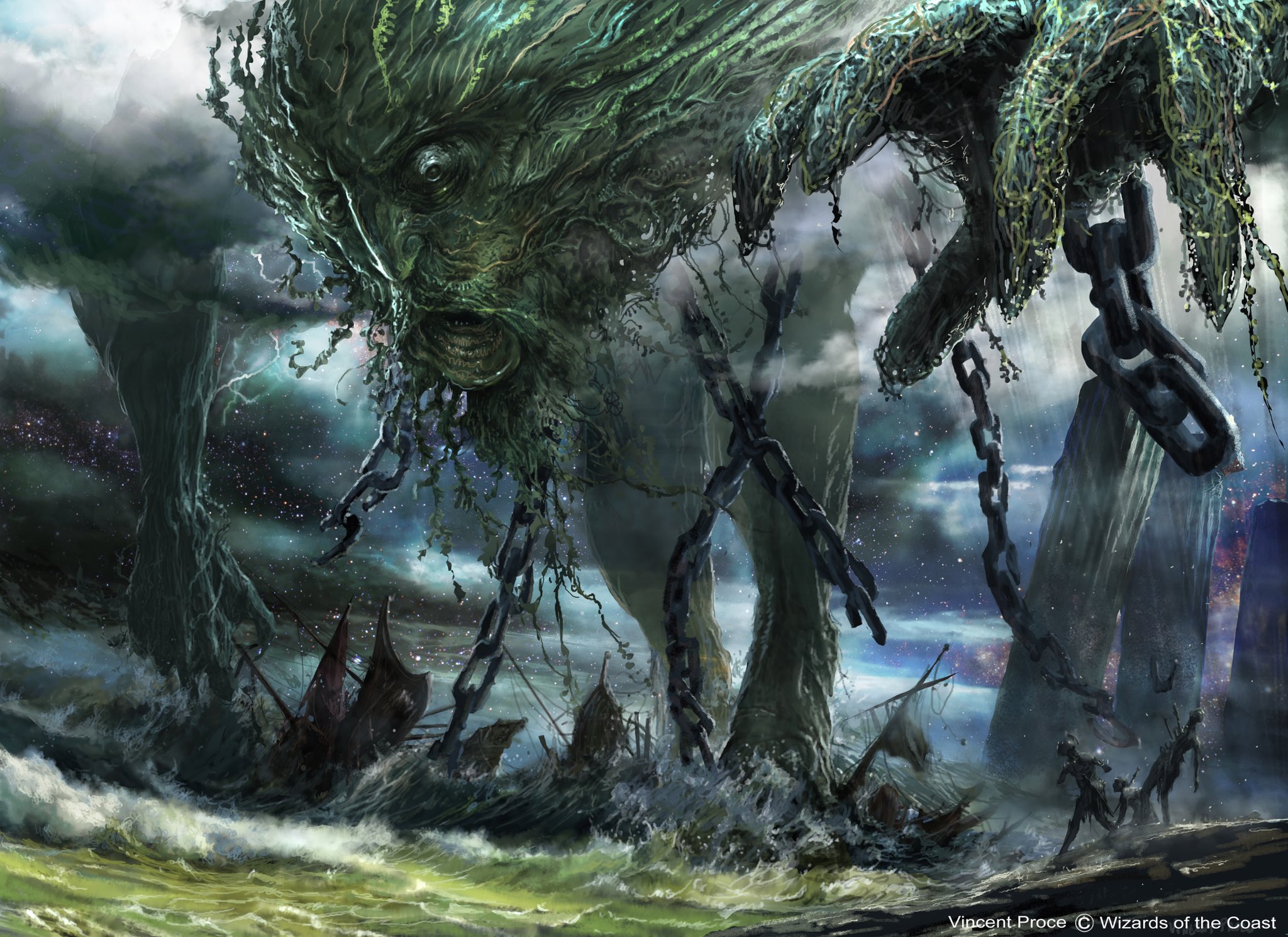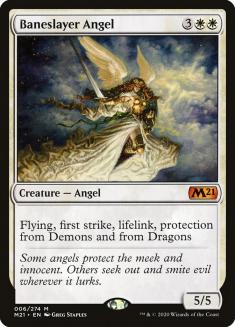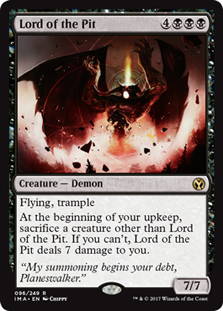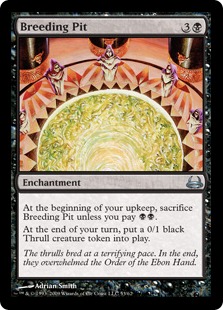Hello, and welcome to this week’s installment of Sullivan’s Satchel. The big news, at least from my perspective, was being able to hold a SCG Tour event entirely online, due to the combination of Magic Arena (Arena), MTG Melee, Discord, Skype, LSV’s webcam, and a variety of other technological miracles. Things mostly went off without a hitch, and we were able to cover eleven individual rounds over the course of half a day. It’s not quite a replacement for physical tournaments – they’re an experience unto themselves – but given the circumstances it went smoothly and felt good to be back in the “booth” (my mother-in-law’s dining room, on a piano bench) after such a long hiatus.
Core Set 2021 Standard seemed pretty good, a very different metagame from what I experience on Magic Online (MTGO). I wonder if this can be summed up by the massive expense for Uro, Titan of Nature’s Wrath on MTGO versus it being relatively trivial to craft on Arena, but in any case there was a lot more Temur Reclamation than I’m used to seeing. There was a good variety of strategies among both decks people played and what made the Top 8, and all the colors had solid representation. I’m not a huge fan of the play of Temur Reclamation and even less of a fan of the play of the various Sacrifice decks, but they aren’t awful by any means and they aren’t the only decks being played.
As a reminder, you can send in your own questions to this column (they have to come from somewhere, people). Maybe it’ll be chosen, and even less likely but still possible is it being selected for Question of the Week, in which case you receive $25 of SCG credit. With that,
Anthony Avitollo asks:
With the reprinting of Baneslayer, it reminded me of your Ravenous Chupacabra rant; will we ever have that good tension-filled Magic again in Standard, or is the power level just permanently off the charts?
Baneslayer Angel is powerful enough that people can sideboard it in powerful Cubes, or even play it maindeck. It has showed up in Modern and Legacy a not-trivial amount. That isn’t to say it’s good in every matchup or anything, but it has enough weight when its good to justify play even in high-powered formats. So I don’t buy the notion that the world has just passed Baneslayer by.
The bigger challenge is creating an ecosystem where Baneslayer can thrive. Going way over the top with Wilderness Reclamation; low-opportunity-cost ways to bounce/kill/otherwise trivialize it such as Teferi, Time Raveler; too much competition among powerful five-mana cards – all of this contributes to Baneslayer being a non-starter. It isn’t just about the powerful cards that you don’t print, however. Putting a lot of rate into cards like Bonecrusher Giant, Grasp of Darkness, and Eliminate (powerful cards that happen to be poor against Baneslayer Angel) makes it more likely that Baneslayer can show up.
Jury is out on how the world will shape up; it only takes a specific card or two before Baneslayer just can’t show up in maindecks (I think Teferi, Time Raveler and Elspeth Conquers Death could be enough by themselves), but to whatever extent Baneslayer is fringe, or doesn’t show up at all, it’s more a function of the structural issues facing five-cost creatures that can just be killed with nothing to show for it, and not a problem with Baneslayer not holding up with ten years of new cards or whatever.
From Ryan Potter:
What is your opinion of Uro, Titan of Nature’s Wrath in the context of card design? What would you change about the card or would you scrap the design all together?
Like most things, pros and cons. In no particular order:
Pros
- Best card in the set actually speaks to set mechanic.
- Distribution of material is diverse enough that it doesn’t encourage one particular path.
- Cares about the graveyard without creating games that are all about the graveyard. Usually more effective to fight with “softer” cards like Scavenging Ooze or Soul-Guide Lantern than Tormod’s Crypt or Leyline of the Void.
- Gives control decks a way to get a game over with fairly quickly.
- Escape does inform deckbuilding, isn’t totally generic, mana requirements on escape also create some different incentives.
- Dynamic the degree to which creature removal “works.” Sometimes your opponent can only escape once and your Doom Blade works, sometimes it doesn’t do anything, sometimes it sets them back a few turns, etc.
Cons
- Very generic. It’s interesting that the stuff you get is spread out but not that interesting that the stuff you get is pretty boring.
- A lot of the same stuff that the other good Simic cards provide. Not sure if that’s a critique of Uro or Uro + Growth Spiral + Hydroid Krasis + etc. but Uro is definitely contributing some to that.
- So overwhelming so often that even if there is ostensibly an interesting game to play in its aftermath, it often doesn’t play out that way.
- Escape does inform deckbuilding, but how interesting is it to incentivize control decks to play fetchlands, cheap cantrips, and low-opportunity-cost self-mill, and cut creatures? That’s already the usual incentive structure.
On balance I like the card as a big bet, but two years of anything powerful is going to be tough, and the card shapes older formats as well. I guess I wish it was slightly smaller so the opponent having something big could make the game more interesting more frequently, but I’d rather leave it as-is than pull the design entirely. I think it’s net-positive, probably a shade too good but part of the reasonable range when you shoot high on something.
From Ernie McCracken:
Potential Mailbag Q: Teferi’s niche phasing ability has me thinking. When designing cards/mechanics, do you think it’s effective to print a teaser/test version of it in a set before 100% implementation? Imagine if this was done with Companion, perhaps even in a supplemental product, with only Obosh….
Mechanics are a lot less exciting after they’ve been debuted, and Magic works on their sets over a year in advance. So, you can show something off a set or two in advance (this has been done here and there, with Future Sight, Eye of Ugin, etc.) but have no information on how it plays in the real world, or wait eighteen months before you see the cards in action, in which case you aren’t really “previewing” something the first time.
I do think there is room to do more of the first thing — give a tease of something, suggest a mechanic in an upcoming set, something that functions on its own at the time of release but implies more support or context down the road. I think Tarmogoyf “spoiling” planeswalkers and Eye of Ugin were really cool at the time. Those designs take a lot of certainty and coordination, so they don’t always emerge organically, but there is probably more room to explore that space than has been utilized over Magic’s history.
Lastly, and this week’s winner of $25 in SCG Credit, from Dair Grant:
Should I be as jealous of casual magic players as I am. They appear to be having way more fun than I am. It makes me wish I could unlearn a lot of what I know strategically.
Absolutely you should be. I remember when I began playing (The Dark/Revised) and I don’t know if I would have self-identified as “casual” since “competitive” wasn’t really a thing, but I remember being endlessly fascinated by the possibility of cards. Imagining the situations they could be useful, or just getting lost in the lore and the art, whatever. Intellectually, I kind of knew Lord of the Pit + Breeding Pit wasn’t very good — it was so much mana, you had to draw both of them, it wasn’t very good if one of them got killed, a million different things — but playing a game where you thought about things like Lord of the Pit + Breeding Pit was so captivating that it didn’t really matter what the reality was.
I had the fortune of growing up with Eugene Harvey, who built decks that were good and different, so I got the best of both worlds — feeling like the games I was playing were legitimate without dampening the sense that the card pool was vast and there was tons to explore. Something about playing that way blurred the lines between “casual” and “competitive,” and in retrospect it was the best of both in a lot of ways.
I think the worst part of playing competitively is the framework that pulls out 5%-10% of each set and throws out the rest. So much of what’s fascinating is the cards as an expression of something, the sum of everything that creates a set, the ways each color has their own spin on a cycle, etc. and it’s so easy to ignore all that when you’re just sifting through the file looking for one-mana discard and the good counterspells.
This was really hammered home a few years back when my old boss at Activision brought in his old decks, all wrapped in rubber bands, none fewer than 70 cards. They were a blend of a light theme plus some cards he liked. I’ve never been more jealous.
Still, you can never go back, and part of being casual is the authenticity of the experience. Part of the appeal of Old School is that experience being so incredible that it’s worth spending five figures to fake it. Better to be true to yourself than pretend to be something else. But when it comes to those who are getting the experience for real, unvarnished, pure to the world?
Yes, you should be jealous.






